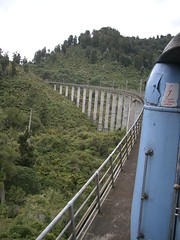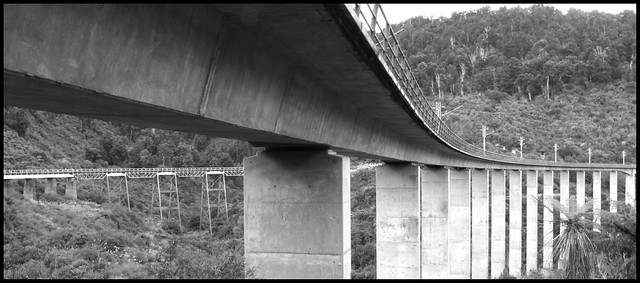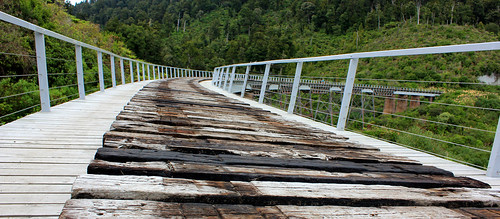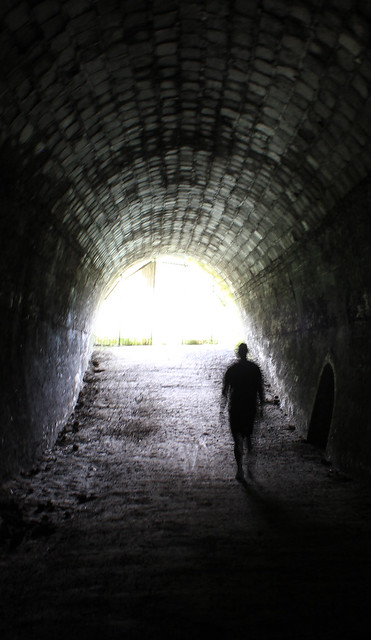Hapuawhenua Viaduct, Old Coach Road, Ohakune
Team: Mark, Me
We decided to head to Ohakune for a couple of nights between Christmas with my extended family and a New Years visit by Marks parents. Our last chance to have some time to really relax and have a holiday that was just us, sans baby.
The only plan we made was to stay at the Top 10, where we have stayed before. Its a lovely place, and we recommend it to anyone. Other than that, we would do what the weather made us feel like doing, even if that was spending most of the day in bed.
The weather was indeed pretty rubbish for most of our time. It either rained or threatened to rain. After a "daytrip" to Taumarunui for lunch (tip: dont bother), the next day was forecast thundery showers in the afternoon, so we got up at a reasonable time and went for a walk up to the Hapuawhenua Viaduct in the morning. Its a track I saw in Wilderness Magazine ages ago (and I remember the bridge being talked about when I did the Overlander train trip all those years ago) and have wanted to do ever since.


There are options to be driven to the far end of the Old Coach Road track and mountain bike all the way back, but with my balance being a bit precarious, we opted to walk in and back instead after some consultation with the local i-site about the track.
After stopping in at the supermarket to buy the makings of bread rolls for lunch, we headed the couple of kms out of town, parked up and got started.
At 28 weeks pregnant, the climb up to the viaduct felt long and steep, but coming back I realised it really wasn't. The signs and I-site had indicated a return walk should take about 2 - 2.5 hours including a lunch stop, so we felt we did pretty well getting up to the viaduct in under 1.5 hours. The track is largely exposed, so with the muggy weather, the going was pretty warm and I seriously wished I had managed to find a better pair of shorts before we went away on holiday.
Thankfully Mark was carrying the bag, and there were regular information panels I could use as an excuse to stop at on the way up the hill. We decided to visit the old tunnel on the way home, figuring that if the weather did come in, we would rather have already had lunch before it did. The track up and around the hill is through some lovely bush, and is much more narrow as it is not the original Coach Road (which you can still see some of the old cobbles of as you are walking it). Eventually, it drops down under the current Main Trunk Line bridge before popping up next to the old bridge.


A massively long picnic table at the far end of the old viaduct makes a wonderful lunchspot, and the toilet was remarkably clean. We had ham and cheese rolls, fruit and a bottle of juice to share as lunch and debated whether to stay and wait for the Overlander to come through. We eventually decided not to, and started walking back, this time stopping in to walk in and back the old tunnel.



About 2 minutes after we passed the last spot where the main trunk line could be seen, the train went through. Oh well. After that, it was a nice walk back down the hill in increasing heat to the very warm car in the very full carpark. A stop at the supermarket for ice-creams later, and it was time for a hot shower and a nap to round out the afternoon.
I highly recommend that anyone visiting the Ohakune area either walks or mountain bikes the Old Coach Road trail. Its family-friendly, and really quite interesting.